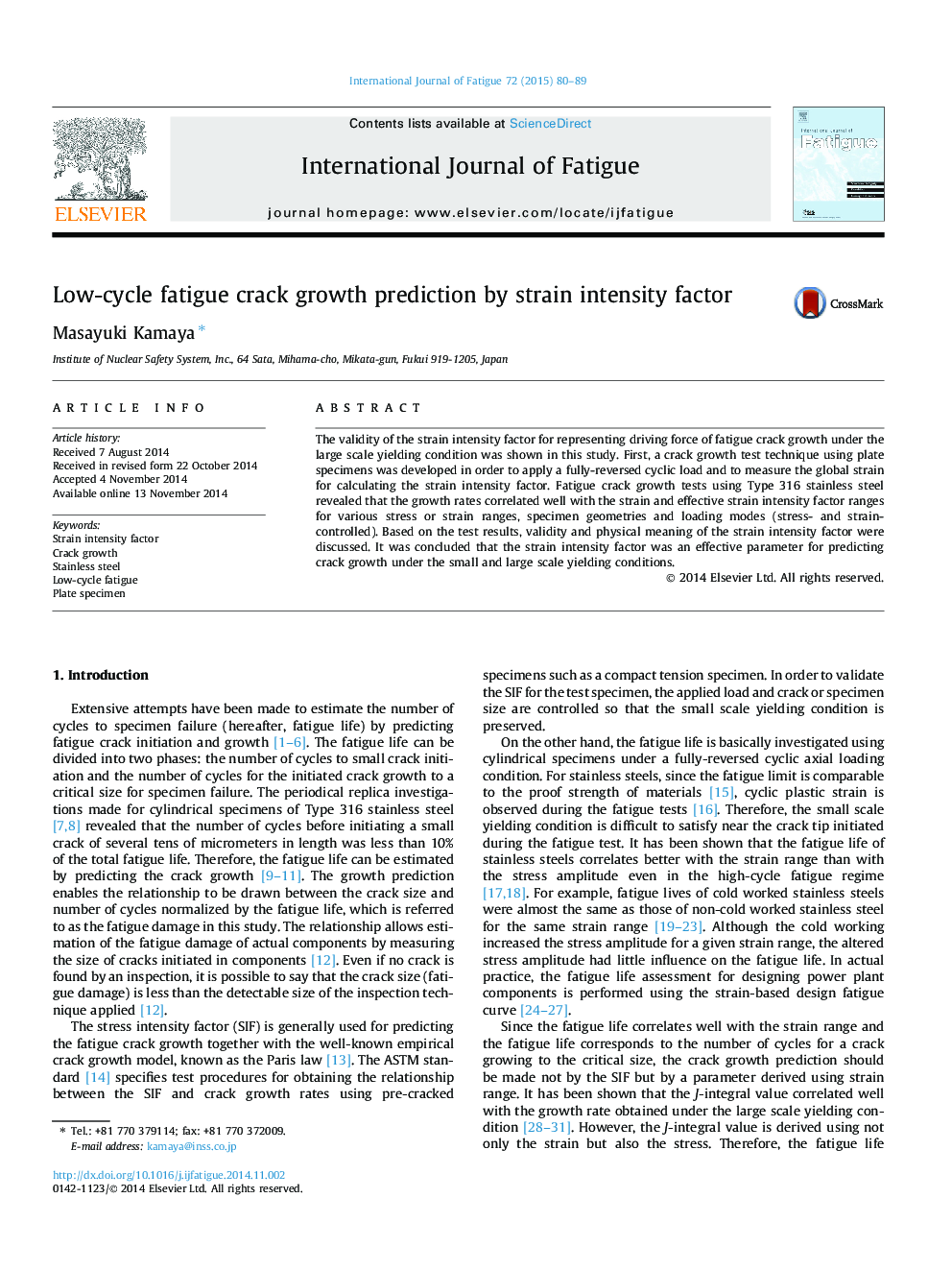| Article ID | Journal | Published Year | Pages | File Type |
|---|---|---|---|---|
| 776782 | International Journal of Fatigue | 2015 | 10 Pages |
•The testing method for strain-controlled fully-reversed load was developed.•The crack growth rates were successfully correlated with strain intensity factor.•The strain intensity factor was shown to represent crack tip opening displacement.
The validity of the strain intensity factor for representing driving force of fatigue crack growth under the large scale yielding condition was shown in this study. First, a crack growth test technique using plate specimens was developed in order to apply a fully-reversed cyclic load and to measure the global strain for calculating the strain intensity factor. Fatigue crack growth tests using Type 316 stainless steel revealed that the growth rates correlated well with the strain and effective strain intensity factor ranges for various stress or strain ranges, specimen geometries and loading modes (stress- and strain-controlled). Based on the test results, validity and physical meaning of the strain intensity factor were discussed. It was concluded that the strain intensity factor was an effective parameter for predicting crack growth under the small and large scale yielding conditions.
